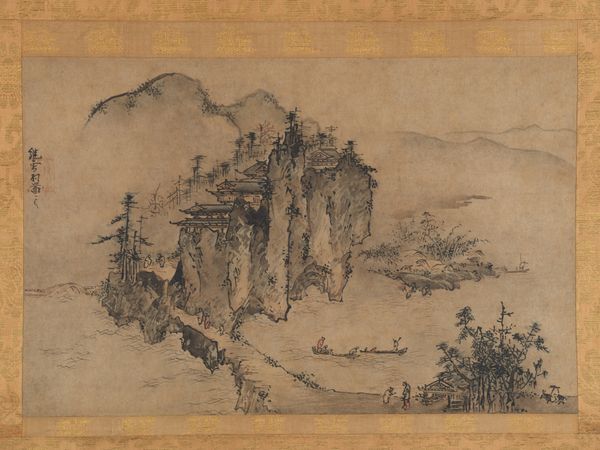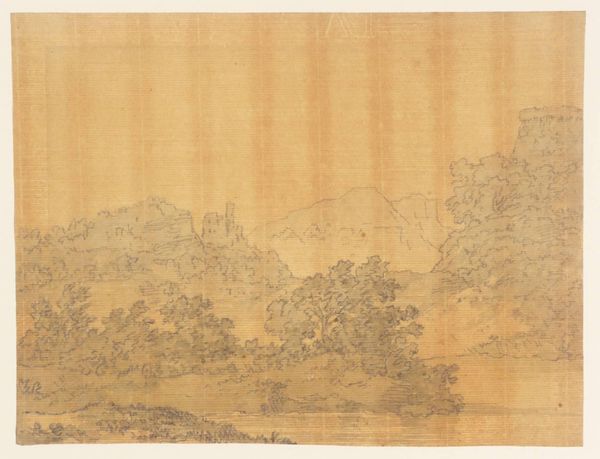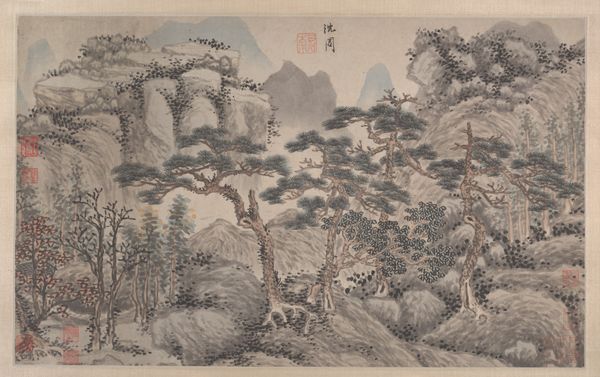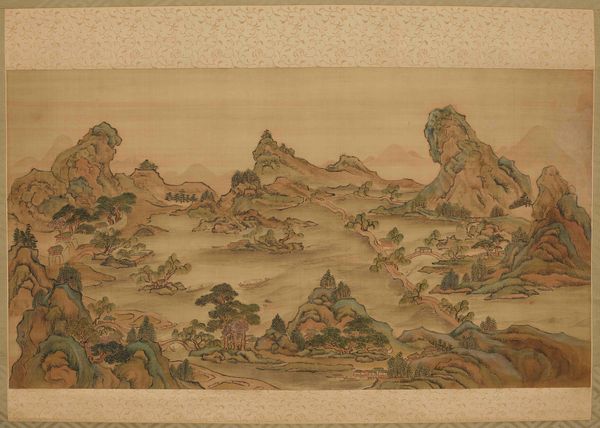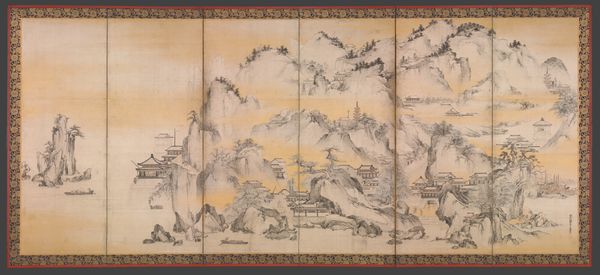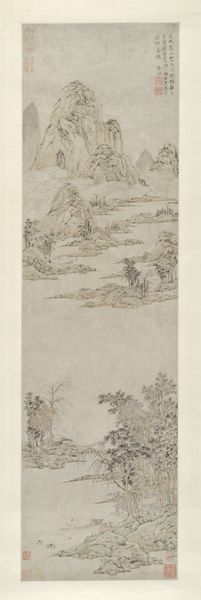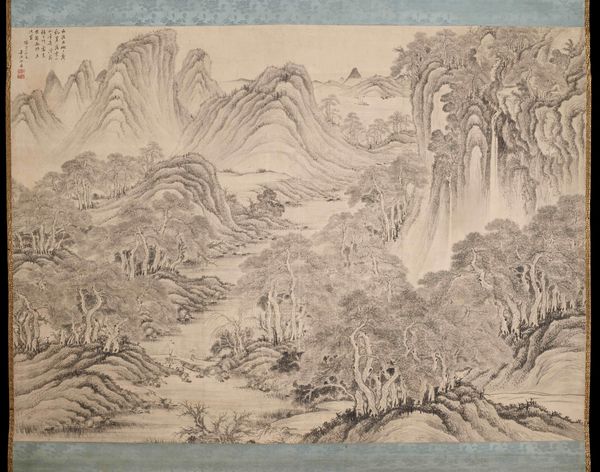
drawing, tempera, ink
#
drawing
#
ink painting
#
tempera
#
asian-art
#
landscape
#
ink
#
geometric
#
ancient-mediterranean
Dimensions: 5 x 6 3/4 in. (12.7 x 17.1 cm)
Copyright: Public Domain
Curator: Let's discuss this piece, which comes to us from sometime during the Ming Dynasty— between 1368 and 1644. It is believed to be made by the artist Li Xiying. It's called “Landscape with Ox Carts on a Road,” and we believe it consists of ink and tempera on either paper or silk. What's your initial take on it? Editor: It's fascinating, a bit melancholic, almost sepia-toned. The subdued palette focuses my attention on the subtle lines and textures. There's a delicate balance between the defined foreground elements and the softer, more atmospheric mountains in the distance. Curator: That atmospheric perspective is key. The use of tempera and ink was strategically applied, as you say, to create a sense of depth. But that kind of idealized pastoral scene often reflected the desires of the literati class in China, the class that probably purchased the artwork in the first place. Editor: I’m also drawn to the composition, with the ox carts providing a focal point leading the eye into the landscape. The geometric structures of the buildings amid organic forms are quite striking too. It feels like a representation of societal constructs within nature. Curator: The placement of those structures does signal a level of human intervention within the landscape. Remember, landscapes weren’t just about representing the natural world; they reflected political ideals, social harmony, and the proper relationship between humanity and the cosmos. It certainly wasn’t created in a vacuum. Editor: True. But looking beyond those possible socio-political elements, the brushstrokes themselves seem so effortless. You sense a freedom in how the artist applied the ink, a controlled spontaneity if that makes sense. Curator: Yes, and one could argue that ‘spontaneity’ itself became a codified aesthetic within that culture. Even the very act of creating art became something of an aristocratic privilege, shaped by specific societal demands and aesthetic conventions. Editor: Well, even knowing that, I’m still moved by the raw beauty of the mountains receding into the distance, as an expression of solitude and peacefulness. I guess every viewer comes with their own biases! Curator: Of course. And how we engage with pieces like “Landscape with Ox Carts on a Road” becomes its own, historically-shaped interpretation. Editor: Precisely. I like how this focused look lets me see how the formalism blends into the larger cultural picture.
Comments
No comments
Be the first to comment and join the conversation on the ultimate creative platform.
